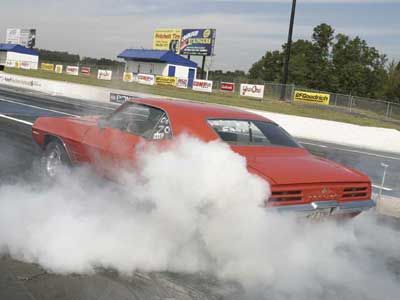
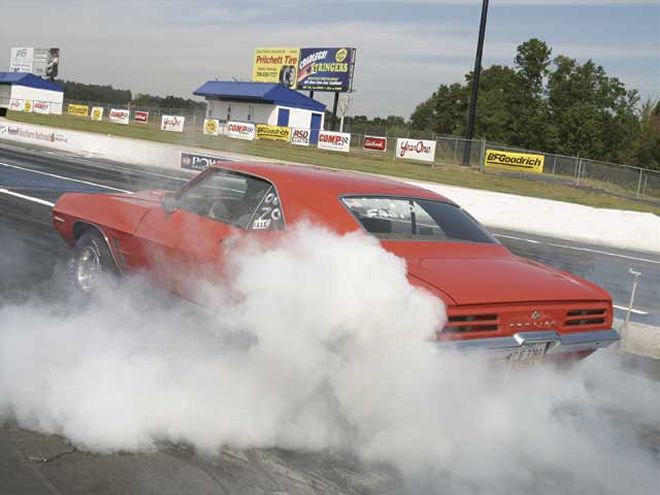
To witness musclecars running 11s on bias-ply tires while appearing showroom stock is an enticement just too great to ignore.
Untold time, effort, and money goes into building these musclecars, and though there are gift certificates to be won and even a $1,000 reward from Year One at some events for the first car to break into the 10s, it's the bragging rights for the drivers and the stock look of these machines that has made Factory Appearing Stock Tire (F.A.S.T.) drag racing as popular as it is.
F.A.S.T. Racing, an offshoot of the Pure StockMusclecar Drags, was born in 2001 at the Bristol Bash as the Year One F.A.S.T. Shootout, according to the organization's Web site, www.fastraces.org. A series schedule began in 2003, and Year One still plays a major sponsorship role in the program under the Year One F.A.S.T. Series name.
The object of F.A.S.T. racing is to see how quickyou can traverse the 1,320 feet in your '55-'74 musclecar on bias-ply reproduction tires and still appear to be driving a factory-issue musclecar. According to the rules, deviations from a stock appearance are prohibited, but modifications of an unseen nature are allowed in many areas, such as the engine, where "Internal engine modifications [are] encouraged," including unlimited cubes. But be advised, from the outside the engine must appear stock right down to intake, head, and exhaust manifold casting numbers. In addition, it must breathe through a stock-appearing carb and factory air cleaner assembly and sip fuel from stock-sized lines from the fuel pump to the carburetor. The body, engine compartment, interior, and undercarriage must appear stock as well.
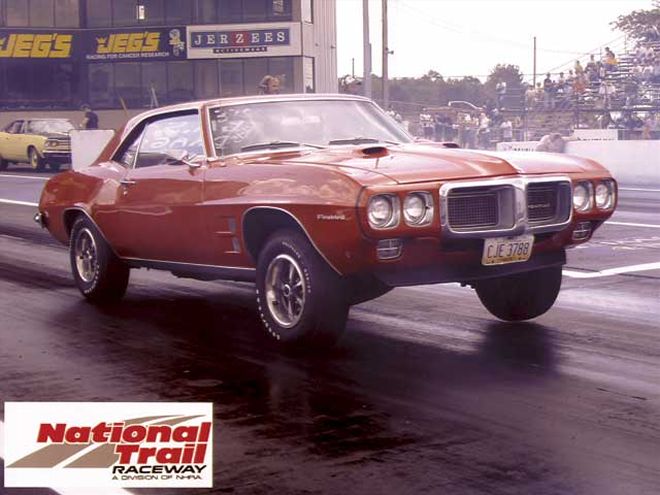 Owner/driver Patrick Wendling describes his launch technique: "I leaveat idle on a quarter pedal travel and give a soft touch all the waydown, pushing the pedal like there's an egg under it that I don't wantto break." The result is a 1.90 60-foot on Polyglas tires and air underthe left front tire!
Owner/driver Patrick Wendling describes his launch technique: "I leaveat idle on a quarter pedal travel and give a soft touch all the waydown, pushing the pedal like there's an egg under it that I don't wantto break." The result is a 1.90 60-foot on Polyglas tires and air underthe left front tire!
From this racing series came the premise for this tech story: Which cool tricks employed by a Pontiac running in the series can be applied to a Pontiac that you are building?
Meeting F.A.S.T. racer Patrick Wendling and seeing his '69 Firebird at Norwalk last year provided us with the following tips for hiding power parts, going faster on the cheap, and maintaining durability. Patrick's Bird has been built to appear as a factory 400 Ram Air IV model. Legal per F.A.S.T. rules, it packed 473 cubes of Pontiac power up front for the '04 season.
HPP had a rare opportunity to investigate this racer a bit deeper than would normally be possible when we drove out to Ohio in the off-season to photograph the Bird while it was mostly disassembled. We were able to see firsthand some of the components and tuning it took for Patrick to put 388 rwhp and 531 lb-ft of torque to the back tires and propel his 3,645-pound Bird to 11.76 e.t.s at over 118 mph on Polyglas G70-14 bias-ply tires in 2004.
See how many of these tips and tricks you can apply to your Pontiac to provide you with a hidden punch to surprise your next competitor. In Part II, we'll return with 10 more tips to help you go faster while looking stock, and we'll tell you which old stand-by tricks didn't work on Patrick's Bird.
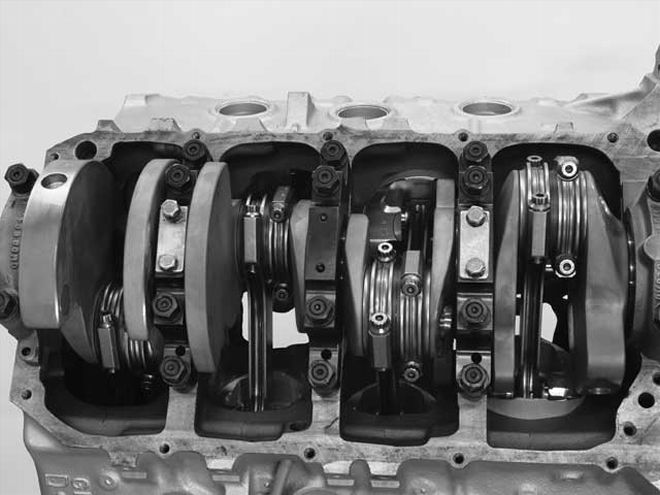
Tip 1: Short-Block Down Under
This photo reveals a 455 block, not a 400. Cubes for the '04 season were 473 with a 0.060 overbore and a 4.25-inch stroke crank. Despite all that's been done with 3-inch main strokers in 400s, Patrick used a 455 block and had a 3.25-inch main custom Moldex stroker crank made because he and his engine builder, Bryan Weber at Weber Racing Equipment, felt that durability would be increased. Custom four-bolt caps and forged steel Eagle rods (at 816 grams are lighter) add even more durability to the bottom end. The engine also uses a windage tray (not shown) with extra return holes in it, and a custom baffle is in the pan to keep the oil at the pickup on launch.
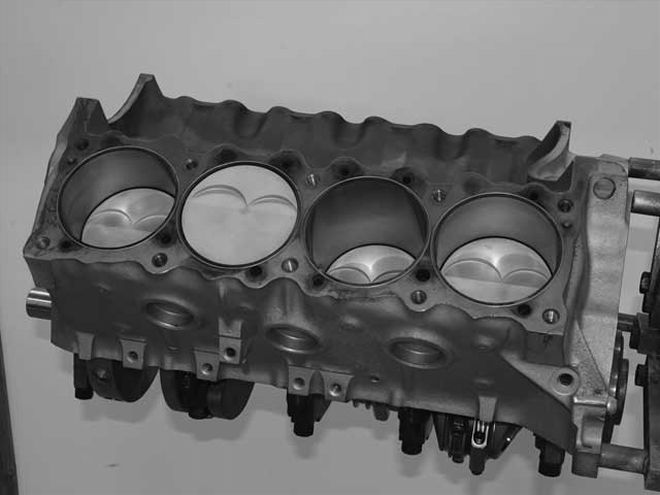
Tip 2: Short-Block From the Top
A set of Venolia pistons are lightweight at 525 grams and have strong forged-aluminum construction for durability. Note the block is O-ringed to keep the compression in the cylinders. Also, a zero deck (piston-to-deck height) makes more power.
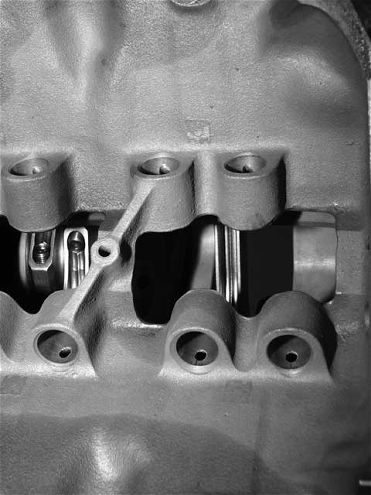
Tip 3: Lifter Bore Restrictors For Durability
Lifter bore oil restrictors also contribute to longevity by keeping the oil in the bottom end where it's needed more. According to Patrick, the 0.080 restrictors were worth a 10-pound increase in oil pressure.
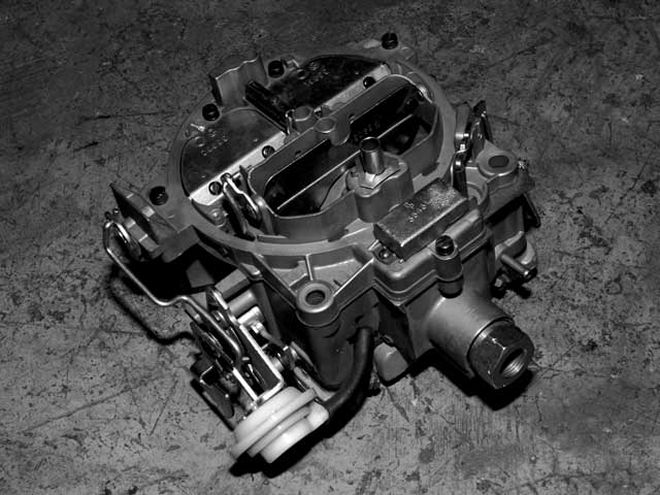
Tip 4: Carb Contemplation
Patrick's Bird had to run a Q-jet, but for 2004 it flowed 800 cfm instead of 750 and is internally modified. Aside from jets and metering rods, Patrick says, "The needle-and-seat is the large one, and I adjusted pressure on the electric fuel pump until it flooded and backed it off a half turn. Now it's set to 7 pounds--everyone says the carb should flood, but it doesn't." The carb shown is from Cliff's Q-Jets, which is even more trick for the '05 season.
Tip 5: Wild Wires
Patrick says to "always check ohm readings on the plug wires. Taylor wires have worked best for me. We use lacquer thinner to take off the name, and we change the boots so they look stock."
Tip 6: Exhaustive Measures
Factory-style manifolds are required, and Patrick currently uses R.A.R.E. long-branch iron manifolds that he says work great. They may see some port matching for next season. A legal X-pipe increases power as well.
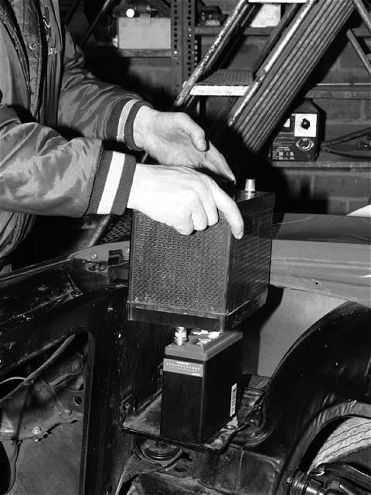
Tip 7: Hidden Battery Weight Chopper
While the battery appears to be a reproduction 45-pound unit, it's actually a display battery (as used in retail stores) with the bottom cut out and a small 9-pound Odyssey 680 cca dry-cell battery mounted inside of it. Total weight savings is 36 pounds off the front end.
Tip 8: Hide-A-Way Ignition
Stock coil, right? Nope. It has been gutted, and wiring from an MSD box and coil inside the car is fed through the bottom of the stock coil to keep it hidden. Rubber fuel line protects the wires from misfire. The MSD box is in the glovebox, and the coil is tucked up under the dash.
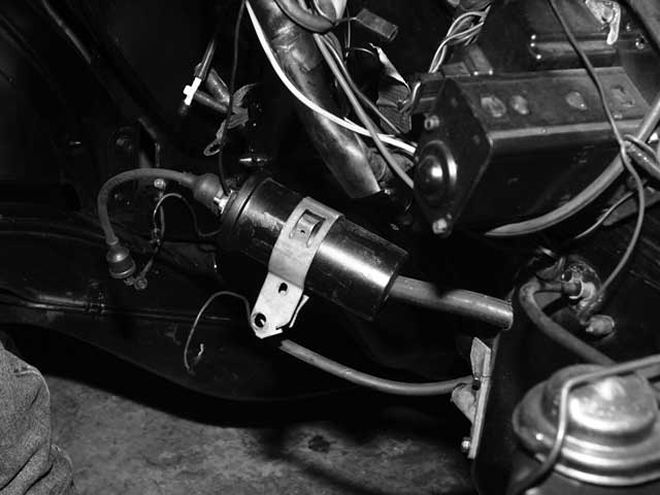
Tip 9: More Hidden Ignition
A PerTronix system that fits under the stock distributor cap ensures electronic ignition reliability and easier maintenance than points.
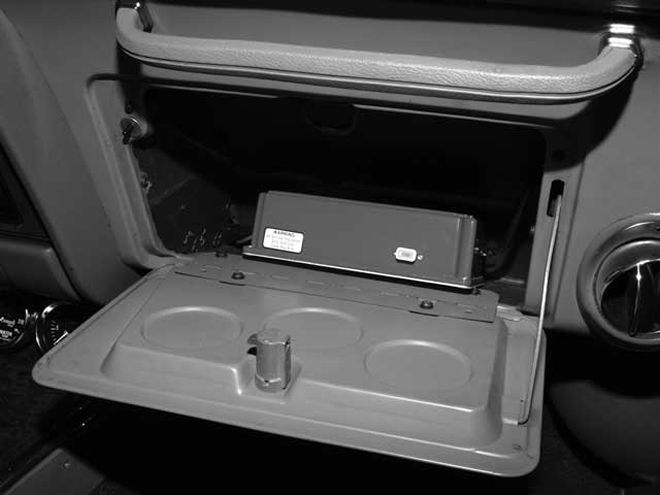
Tip 10: No-Buck and Low-buck Pound Pillagers
Power steering (15.5 pounds), power brakes (9.5 pounds), and A/C (95.5 pounds) have been removed from this Bird, and a mini starter (9 pounds) has replaced the stock starter (20 pounds), all in an effort to cut weight under the hood.
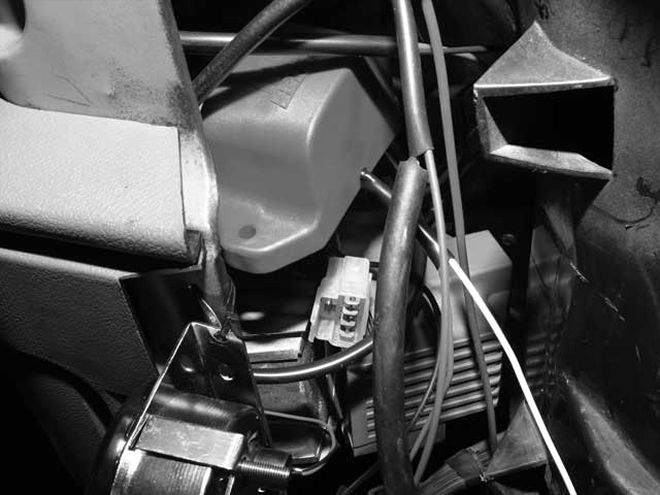
Tip 11: Cheap Chain
While solid motor mounts are allowed in F.A.S.T. competition, Patrick has found that using the rubber mounts and a chain restraint to keep the motor from rocking in its mounts on launch and breaking the tires loose is just as effective and cheaper. The other advantage is psychological--the engine appears to have a tamer cam at idle when competitors see it in the pits because the chain keeps it from rocking.
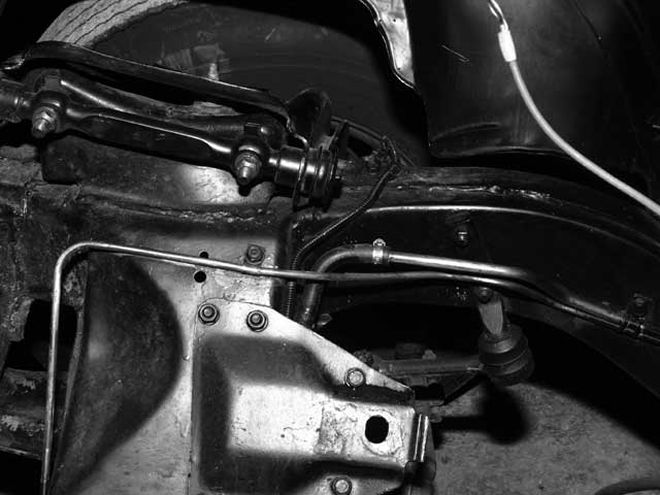
Tip 12: Fuel Line Detective
See the rubber fuel hose? That's how the factory does it. Problem is, Patrick says the hose tends to kink where it turns, reducing fuel flow. To thwart the problem, he runs a bent hard line inside the rubber fuel line.
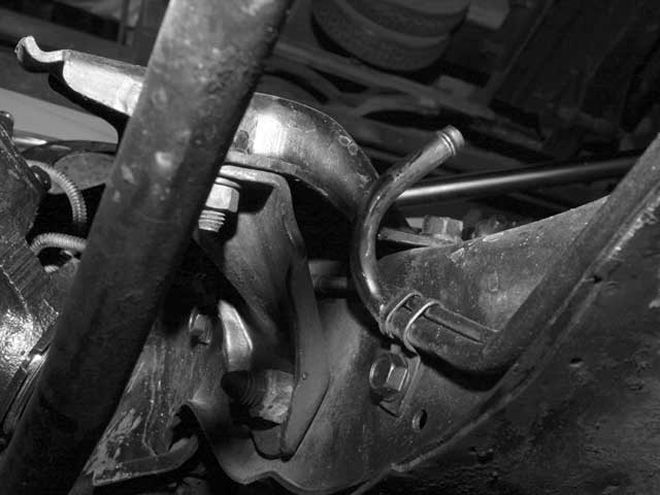
Tip 13: Fuel Line Detective Revisited
Another problem fuel line is the one that runs across the front subframe to the mechanical fuel pump. As you can see, it is so twisted that it has a reduced radius in many of its contours. Patrick is working on a better-bent line for this area.
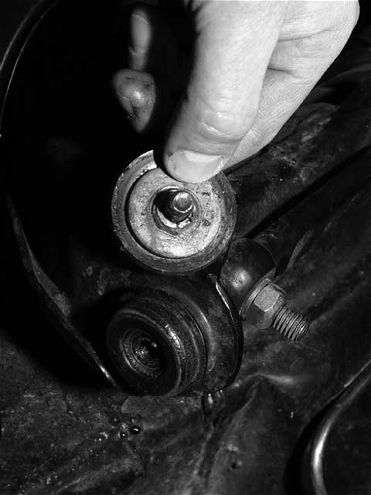
Tip 14: Low-Buck Control Arm Bushing Trick
Patrick pressed a 3/16-inch-long, 3/8-inch-diameter pipe sleeve into a washer to be placed ahead of each upper control arm washer. The pipe sleeve bottoms out against the shoulder of the control arm shaft and keeps the teeth on the steel inner sleeve of the control arm bushing from biting on the washer when installed. What this does is allow much greater freedom of motion since the bushings are no longer working on the principle of sheer for upward and downward movement of the control arm. Patrick also adds some white grease between the washer and rubber bushing to further reduce friction. The result is that the front end comes up easily on launch, yet the bushings are still tight enough to keep the front end safe for driving.
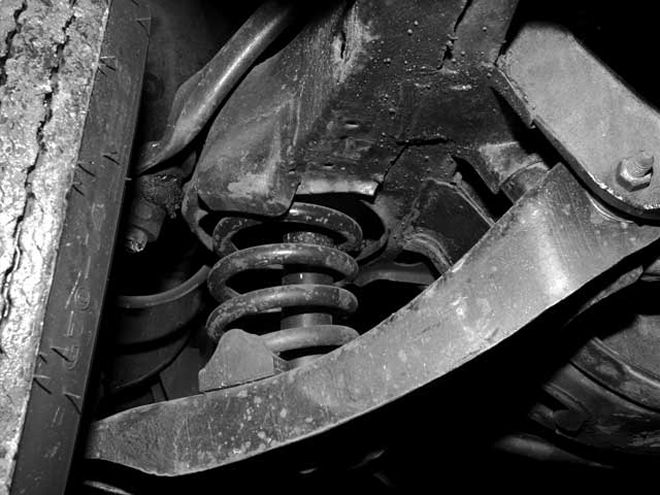
Tip 15: No-Buck Drag Springs
The stock 350 springs that came with the Bird have been retained, and Patrick says they work great, allowing the front end to rise on launch while supporting the front end a the proper height at rest.
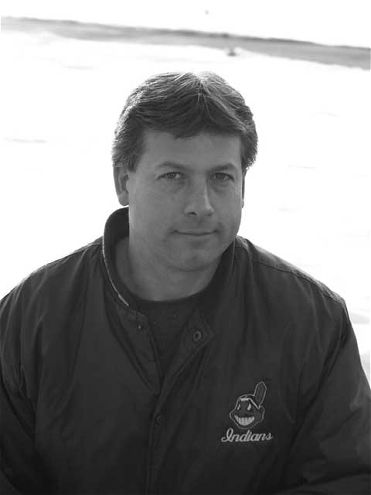
About The Racer And His Race Car
Along with running a successful construction business and raising five children with his wife, Dawn, Patrick Wendling has somehow managed to find time to compete in the F.A.S.T. series.
He located his '69 Firebird in California five years ago. Equipped with a 350 two-barrel engine and Verdoro Green paint, the Bird had made its little old lady owner somewhat happy for 37,000 miles. The facts that it had no rust and ran great, convinced Patrick take it home to Elyria, Ohio. After discovering Pure Stock racing, Patrick decided to build the Firebird into a Ram Air IV clone to compete. But the need to go even faster drew him toward F.A.S.T. Racing.
"I love the series because I love sleepers," Patrick says. "All my cars have always run mufflers and had a sleeper look, so competing in this type of racing was a natural for me." Other models Patrick has owned include a '74 Firebird, a '72 LeMans, a '68 GTO, a '73 and '74 Grand Ville, and a '76 Grand Prix.
<{{{H3}}}>F.A.S.T. '69 FIREBIRD SPECS Year/Model1969Race Weight3,645 lbsCurb Weight3,455 lbsFuel LevelFullType of Fuel110-octane Block{{{Pontiac}}} 455 bored 0.060Cubic Inches Before/After455/473Built ByWeber Racing Equipment and ownerCarburetor800-cfm Q-jet, 0.073 jets, custom metering rodsSpacer PlateNoIntake ManifoldAluminum Ram Air IVFuel System140 Mallory electric pump, factory lines, mechanical pump for looks onlyHeadsRam Air IV, 2.11/1.77 titanium valves and retainers, 10-deg. locks with lash caps, three-angle valve job, milled to increase compression, minor pocket portFlow Numbers Intake/Exhaust232/184.5 at 0.{{{600}}} liftPistonsVenolia forged-aluminumPistons/RingsSpeed-Pro moly 1/16-1/16-3/16Rods{{{Eagle}}} forged steel, H-beam, 6.800-inch BBCCompression Ratio12.81CrankshaftCustom Moldex with 3.25-in mains, 4.25 strokeRotating Assembly BalancedYesCamshaftComp Cams solid roller, 238/254 deg at 0.050, 0.600/0.600 lift, 114-deg LSAInstalled Position11/2 deg advancedRocker Arms1.651 Harland Sharp rollerIgnitionFactory w/PerTronix, MSD box and coilTotal Timing36 degWiresTaylorExhaustRepro long-branch manifolds, 21/2-in X-pipe, cheap turbo mufflers, 21/2-in tailpipesTransmissionTurbo-400, shift kitConverterDynamic, flashes to 3,500 rpmShifterFactoryRear10-bolt GM 8.5-in from a '71 {{{Nova}}}, 3.73 gearsBrakes F/R9.5-in drumWheels F/RFactory 14x7 Rally IITires F/RG70-14 Goodyear PolyglasTire Pressure F/R45/40 psiSuspension FrontFactory springs, removed stabilizer bar, {{{90}}}/10 Competition Engineering shocksSuspension RearMultileaf springs, spring clamps, no-name shocksChassis ModsSubframe connectors, solid bushingsInterior ModsNone Exterior ModsBuilt to appear as Ram Air IVSafety ModsCustom driveshaft loopPaintCarousel RedLaunch TechniqueOff idle, soft pedalBest E.T., MPH11.76 at 118.75Shift point5,500 rpmRPM Through the Traps5,800